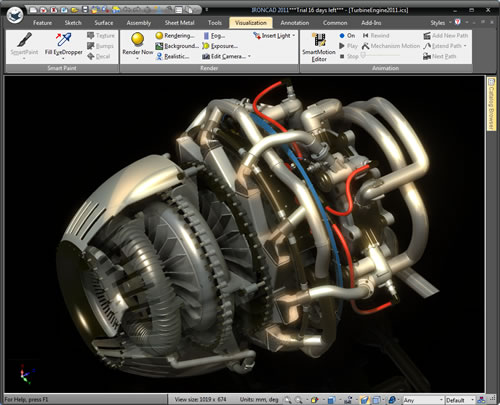Assembly Modelling on:
[Wikipedia]
[Google]
[Amazon]
 Assembly modeling is a technology and method used by
Assembly modeling is a technology and method used by
 Assembly modeling is a technology and method used by
Assembly modeling is a technology and method used by computer-aided design
Computer-aided design (CAD) is the use of computers (or ) to aid in the creation, modification, analysis, or optimization of a design. This software is used to increase the productivity of the designer, improve the quality of design, improve c ...
and product visualization
Visualization or visualisation (see spelling differences) is any technique for creating images, diagrams, or animations to communicate a message. Visualization through visual imagery has been an effective way to communicate both abstract an ...
computer software systems to handle multiple files that represent components within a product. The components within an assembly are represented as solid
Solid is one of the State of matter#Four fundamental states, four fundamental states of matter (the others being liquid, gas, and Plasma (physics), plasma). The molecules in a solid are closely packed together and contain the least amount o ...
or surface
A surface, as the term is most generally used, is the outermost or uppermost layer of a physical object or space. It is the portion or region of the object that can first be perceived by an observer using the senses of sight and touch, and is t ...
models.
Overview
The designer generally has access to models that others are working on concurrently. For example, several people may be designing one machine that has many parts. New parts are added to an assembly model as they are created. Each designer has access to the assembly model, while a work in progress, and while working in their own parts. The design evolution is visible to everyone involved. Depending on the system, it might be necessary for the users to acquire the latest versions saved of each individual components to update the assembly. The individual data files describing the 3D geometry of individual components are assembled together through a number of sub-assembly levels to create an assembly describing the whole product. AllCAD
Computer-aided design (CAD) is the use of computers (or ) to aid in the creation, modification, analysis, or optimization of a design. This software is used to increase the productivity of the designer, improve the quality of design, improve co ...
and CPD systems support this form of bottom-up construction. Some systems, via associative copying of geometry between components also allow top-down
Top-down may refer to:
Arts and entertainment
* " Top Down", a 2007 song by Swizz Beatz
* "Top Down", a song by Lil Yachty from ''Lil Boat 3''
* "Top Down", a song by Fifth Harmony from ''Reflection'' Science
* Top-down reading, is a part of ...
method of design.
Components can be positioned within the product assembly using absolute coordinate placement methods or by means of mating conditions. Mating conditions are definitions of the relative position of components between each other; for example alignment of axis of two holes or distance of two faces from one another. The final position of all components based on these relationships is calculated using a geometry constraint engine built into the CAD or visualization package.
The importance of assembly modeling in achieving the full benefits of PLM has led to ongoing advances in this technology. These include the use of lightweight data structures such as JT that allow visualization of and interaction with large amounts of product data, direct interface to between Digital Mock ups and PDM systems and active digital mock up technology that unites the ability to visualize the assembly mock up with the ability to measure, analyze, simulate, design and redesign.
References
{{DEFAULTSORT:Assembly Modeling Computer-aided design